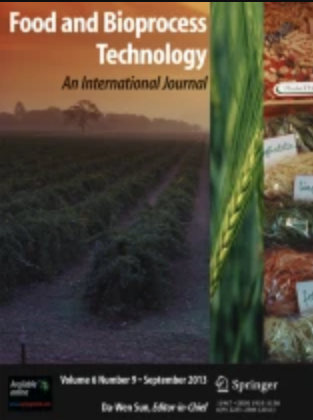Preparation and Characterization of Lyotropic Liquid Crystalline Nanoparticles Loaded with Astaxanthin-Rich Oil from Shrimp Waste
Abstract
The present work examined the potential use of lyotropic liquid crystalline systems (hexosomes, HEXs) prepared from a binary lipid mixture of Dimodan U (a commercial distilled monoglyceride product) and citrem (a citric acid ester of mono- and diglycerides) by post-application technique for delivering shrimp-extracted astaxanthin (ASX)-rich oil. The produced ASX-rich oil-loaded HEXs had highly negative ζ-potentials (in the range of − 27.1– − 34.3 mV) with a size range from 154.4 to 321.3 nm and a polydispersity index (PDI) values in the range of 0.19–0.49. High-resolution transmission electron microscopy (HRTEM) images revealed the coexistence of hexagonal and irregular polyangular structures. ASX-rich oil entrapment efficiency, depending on the oil concentration (0.25–1 wt%), was in the range of 85.1–93.9%. Differential scanning calorimetry (DSC) results revealed that the vesicle’s crystallinity decreases with the addition of ASX-rich oil. Fourier-transform infrared (FT-IR) spectroscopy revealed the hydrogen bond formation between ASX-rich oil molecules and the components of the binary lipids. The DPPH radical scavenging assay also confirmed that the ASX-rich oil-loaded HEXs have a higher antioxidant activity (44.6–70.9%) than the free ASX-rich oil (31.3–69.7%) at 0.25 to 1 wt% bioactive concentrations, demonstrating the potency of such nanoparticles in preserving the bioactivity of the loaded molecule. Taking into account the obtained results, the produced HEXs are attractive for the delivery of hydrophobic bioactives such as ASX for functional food applications.

 求助内容:
求助内容: 应助结果提醒方式:
应助结果提醒方式:


